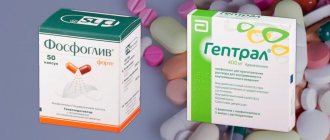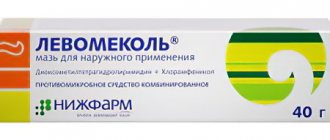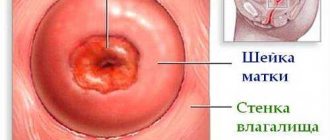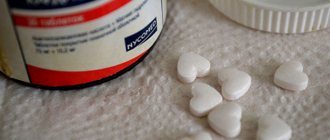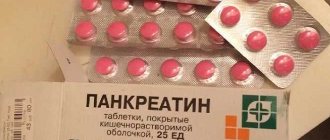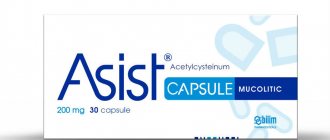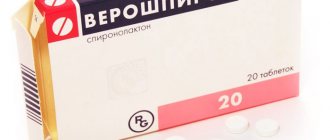Allergies during pregnancy are not uncommon, and its symptoms - sneezing, itching, nasal congestion, coughing, runny nose and lacrimation not only cause discomfort for the expectant mother, but can also negatively affect the course of pregnancy and the development of the fetus. Antihistamines are prescribed extremely carefully during pregnancy; many medications in this category are contraindicated for pregnant women, this also applies to Zodak. The annotation for the drug clearly states that Zodak should not be taken during pregnancy. But what if the doctor prescribed this particular medicine? And what antiallergy drugs are considered safe for pregnant women? Let's try to figure it out!
Release form
Zodak is produced in three different forms:
- Drops. This version of the medicine is presented in a bottle containing 20 ml of transparent liquid, which has no color or has a light yellow tint. 1 milliliter of this solution, which smells of acetic acid, contains 20 drops. There is a cap on top of the bottle that is difficult for a child to open.
- Syrup. It is available in 100 ml bottles containing a colorless or yellow (light shade) transparent liquid with banana flavor. The kit also includes a measuring spoon that holds 5 ml of syrup.
- Pills. They are distinguished by their oblong shape and are covered with a white film shell. On one side of the tablets there is a line along which the medicines can be divided into halves. One pack can contain from 7 to 100 tablets.
The medicine is available in tablets, as well as in the form of syrup and drops.
Zodak tablets are white or almost white in color, oblong in shape, with a score on one side of the tablet. They are contained in blisters of 7 or 10 pieces. Blisters are placed in cardboard packs.
https://www.youtube.com/watch?v=ytcreatorsen-GB
Zodak syrup is transparent, it can be completely colorless or have a light yellow tint. Packaged in 100 ml dark glass bottles. A bottle and a measuring spoon are placed in a cardboard box.
Zodak drops are transparent; they can be completely colorless or have a light yellow tint. Contained in 20 ml dark glass bottles, in addition to the bottle, a dropper cap is placed in a cardboard box.
Compound
| Drops for oral administration | 1 ml |
| active substance: | |
| cetirizine dihydrochloride | 10 mg |
| excipients: methyl parahydroxybenzoate; propyl parahydroxybenzoate; glycerol; propylene glycol; sodium saccharinate dihydrate; sodium acetate trihydrate; glacial acetic acid; purified water |
Drops: transparent, colorless to light yellow solution.
Zodak drops for children are produced by pharmaceutical companies, the country of origin is the Czech Republic. The active ingredient of the drug is cetirizine dihydrochloride, which is a selective blocker of H1-histamine peripheral receptors of the 2nd generation.
The substance does not have significant anticholenergic and antiserotonin effects, which makes the drug more effective and safe for use in childhood compared to 1st generation antihistamines.
Excipients: purified water, glycerol, methyl parahydroxybenzoate, sodium saccharin dihydrate, glacial acetic acid, propyl parahydroxybenzoate, sodium acetate trihydrate, propylene glycol.
pharmachologic effect
This medicine is a second generation antiallergic drug that has a prolonged effect. The abstract for the medicine indicates that the active component cetirizine is part of the group of competitive histamine antagonists. The substance blocks H1-histamine receptors, but has almost no antiserotonin and anticholinergic effect. It has a pronounced antiallergic effect, while acting as an antiexudative and antipruritic agent.
Already at an early stage of allergic reactions it reduces their severity. Reduces the degree of migration of inflammatory cells. It has a depressing effect on the release of mediators that take part in a late allergic reaction.
Cetirizine also relieves spasm of smooth muscles and reduces capillary permeability, which helps prevent tissue edema. Provides a reduction in skin reaction to the introduction of specific allergens, histamine, and hypothermia (in case of cold urticaria).
The use of the drug in a therapeutic dosage does not lead to a sedative effect on the body and does not cause drowsiness.
Side effects
According to the instructions, the following undesirable effects may occur from taking the antihistamine Zodak:
- severe dryness of oral tissues;
- dyspeptic disorders;
- excessive sleepiness;
- increased fatigue;
- persistent dizziness;
- hyperarousal;
- migraine attacks;
- dermal rashes;
- rarely – anigoneurotic edema, urticaria.
After discontinuation of the medication, the above undesirable effects disappear on their own.
Pharmacokinetics and pharmacodynamics
After tablets, drops or syrup have been taken orally, rapid absorption of the active substance from the gastrointestinal tract is noted. The highest concentration of the active component is observed 30-60 minutes after taking the medicine.
Eating does not have a significant effect on the degree of absorption, but if the drug was taken during a meal, the rate of its absorption decreases slightly.
The product binds to blood proteins by approximately 93%. It does not penetrate the blood-brain barrier and does not enter cells.
The metabolic process occurs in the liver, resulting in the formation of an inactive metabolite.
If Zodak is taken for 10 days at a dose of 10 mg, the drug does not accumulate in the body.
The main part is excreted unchanged by the kidneys. After the drug has been taken once, the half-life is approximately 10 hours. When taking the medicine by children from 2 to 12 years old, the half-life is reduced to 5-6 hours.
https://www.youtube.com/watch?v=https:accounts.google.comServiceLogin
If the patient has impaired renal function or is on hemodialysis, the half-life becomes three times longer, and clearance is also reduced by 70%.
Instructions for use of Zodak (Method and dosage)
Zodak is usually well tolerated by the child's body and rarely causes side effects. The following side effects of taking the drug in some cases should be highlighted:
- Dryness in the child’s mouth;
- Dyspnea;
- Rashes on the baby’s skin;
- Thirst;
- Increased saliva production in the baby;
- Muscle pain, spasms;
- Abdominal pain.
We suggest you familiarize yourself with Small white pimples on the chest
The main contraindications for the use of the medication are:
- The baby is up to one year old.
- Kidney diseases.
- Liver failure.
- Individual intolerance by the child’s body to individual components of the drug.
Symptoms of drug overdose in children:
- Intestinal upset, diarrhea;
- Dizziness, lethargy;
- Headache;
- Weakness, lethargy;
- Bloating;
- Tachycardia;
- Delayed urinary emission;
- The child becomes irritable.
If the dose specified in the instructions is exceeded, the baby’s stomach must be rinsed immediately. Then the child should be given any sorbent and call a pediatrician.
Children aged 1-2 years are given only drops in a single dosage of 5 drops, that is, at one time a child under 2 years old receives only 2.5 mg of cetirizine hydrochloride. The drug is prescribed twice - in the morning and before bedtime.
A child aged 2-6 years (for example, at 4 years old) is given one of the following forms of the drug:
- Drops in a daily dose of 10 drops, which corresponds to 5 mg of cetirizine. The dose can be taken once (10 drops are given to the child in the evening) or twice (the drug is given twice, 5 drops each).
- The syrup is given in a daily dose of 1 scoop. The drug, like drops, can be given in full in the evening or divided into two single doses of half a measuring spoon.
- If the age of a small patient is from 6 to 12 years, he is given 10 mg of cetirizine per day. The dosage of the medicine and frequency of administration, depending on the form, will be as follows:
- 20 drops per day for one dose or twice 10 drops of the drug.
- 2 measuring spoons of syrup once at night or 1 spoon twice a day.
- 1 tablet in the evening or 1/2 tablet twice a day.
For children over 12 years of age, the dose of different forms of Zodak will be as follows:
- Twenty drops once in the evening.
- Two scoops of syrup once a day.
- One tablet per day, usually at night.
The dosage of the medication is also affected by the child’s concomitant diseases. For example, liver pathologies force you to limit the daily amount of cetirizine, and the presence of renal failure reduces the age-specific dosage by at least 2 times.
If you exceed the dose of cetirizine, this will lead to overdose symptoms such as rapid pulse, irritability, fatigue, drowsiness, headache, weakness and others. Since there is no antidote to the drug, the child’s stomach is washed and sorbents are given, and then symptomatic treatment is used.
Zodak medicine should be used only after a doctor’s prescription to prevent complications. The drug is intended for oral administration, and food intake does not matter.
The tablets are swallowed whole, washed down with water. Children over 12 years of age and adults receive 1 tablet. 1 per day. Children aged 6 to 12 years receive 1 tablet per day or half a tablet in the morning and evening. It is important that the dosage of the drug for elderly patients is prescribed by a doctor. The dosage of tablets is also determined individually for patients with impaired renal function.
Adult patients and children over 12 years of age receive 2 scoops of the drug once a day. Patients aged 6 to 12 years receive 2 scoops of the drug once a day or 1 scoop in the morning and evening. Patients from 2 to 6 years old should receive 1 measuring spoon once a day or half a spoon in the morning and evening. For people with renal failure, the dose should be halved. Elderly people with normal kidney function may not need dose adjustments.
When using the drug, you should adhere to the rules for using the safety cap. If other drugs (tablets, ointments, etc.) are used in parallel, you should first consult a doctor.
Drops are used internally; before taking them internally, you need to dissolve the drops in liquid. Adults and children over 12 years of age should take 20 drops of Zodak once a day. It is recommended to take the product in the evening. Children aged 6 to 12 years should take 20 drops of the drug once a day or 10 drops of the drug in the morning and in the evening.
Children from 1 to 2 years old receive 5 drops twice a day. For people with kidney failure, the dosage of Zodak drops is halved. The annotation for the drops indicates that in old age, patients with healthy kidneys receive the usual dose. Please note that the medicine bottle is closed with a safety cap.
We suggest that you familiarize yourself with allergic cough in a child: symptoms and causes
In case of an overdose of the drug, the following negative manifestations may occur: a feeling of lethargy and drowsiness, headaches, high fatigue and weakness, tachycardia. Irritability may develop, urinary retention, constipation, and dry mouth are also noted.
In case of overdose, symptomatic treatment is indicated. There is no specific antidote. Gastric lavage is used, and activated carbon tablets are indicated.
In case of an overdose, the following symptoms are possible: confusion, lethargy, dizziness and headache, excessive drowsiness, stupor and stunned state, physical weakness and fatigue, anxiety, the effect of sedation with drowsiness, dilated pupils, itching of the skin and mucous membranes, rapid heartbeat, hand tremors, difficulty urinating, bowel problems such as diarrhea or constipation.
https://www.youtube.com/watch?v=upload
Providing assistance and treatment in case of overdose before the arrival of a doctor or ambulance begins with gastric lavage using an accessible method. Give activated carbon in an age-appropriate dosage. In the hospital, therapy is provided to relieve symptoms.
There is no known antidote for cetirizine. Hemodialysis in case of an overdose of this drug is ineffective.
Overdose
A clinically significant overdose is registered when the therapeutic dose is exceeded by 5 or more times.
Against the background of an overdose, pathological symptoms from the central nervous system develop: increased excitability is replaced by drowsiness, stupor, hand tremors, headache, confusion. On the part of the digestive system, spasmodic pain in the abdomen and diarrhea are observed, on the part of the cardiovascular system - tachycardia (increased heart rate), urination - urinary retention. In case of overdose, gastric lavage is performed and symptomatic therapy is prescribed. Zodak drops do not have an antidote (a substance that neutralizes the negative effect of the drug). We suggest you read: Zodak for urticaria in children
No drug interactions of cetirizine with other drugs were observed.
Based on the results of drug interaction studies of cetirizine, in particular studies of interaction with pseudoephedrine or theophylline at a dose of 400 mg/day, no clinically significant interactions were established.
Concomitant use of cetirizine with alcohol and other drugs that depress the central nervous system may further reduce concentration and reaction speed, although cetirizine does not enhance the effect of alcohol (at a blood concentration of 0.5 g/l).
special instructions
Caution should be exercised when taking Zodak to elderly people, as well as to patients who have impaired liver and kidney function. It is important that a specialist prescribe the drug to elderly patients individually.
You should not take alcohol during treatment, as well as medications that have a depressing effect on the central nervous system.
It is advisable not to drive vehicles or operate dangerous machinery during treatment with the drug.
Since the drops do not contain sugar, they can be prescribed to people who have diabetes.
Reviews about Zodak
According to parents who gave Zodak to their children for allergies, the drug is very effective and copes well with itching, rash, swelling of the throat and other negative symptoms.
Mothers who have used the drops speak positively about them. They like the convenient packaging and low consumption of this medication. This drug is often chosen instead of Zyrtec drops, since the active substance in such drugs is the same, and Zodak is cheaper.
The disadvantages of the drug include its side effects, since cetirizine causes drowsiness in many children, which is why the medication is given only in the evening. In addition, some babies do not like the taste of drops and syrup.
Analogs
Zodak - second generation allergy drops. They are effective and safe, but there are already antihistamines of more advanced - third and fourth - generations that have great advantages.
More modern analogues of the drug Zodak:
- with desloratadine – Neoclaritin, Erius;
- with levocetirizine – Elcet, Glencet;
- with fexofenadine – Fexadine, Telfast.
Zyrtec is considered a complete analogue of the drug Zodak, which contains the same active substance - cetirizine dihydrochloride. The indications, side effects and prohibitions on the use of these drugs are the same, the only difference is that Zyrtec is more expensive.
Other analogues of Zodak drops for children:
- Kestin;
- Clargothyl;
- Cetrin;
- Clarotadine;
- Loratadine;
- Zintset;
- Lotharen;
- Parlazin;
- Letizen;
- Fenistil;
- Erolyn.
Analogues of Zodak are: Zirtec, Zincet, Zetrinal, Parlazin, Cetrin, Cetirizine, Cetirizine DS, Cetirizine Hexal, Allertek, Letizen, Alerza.
